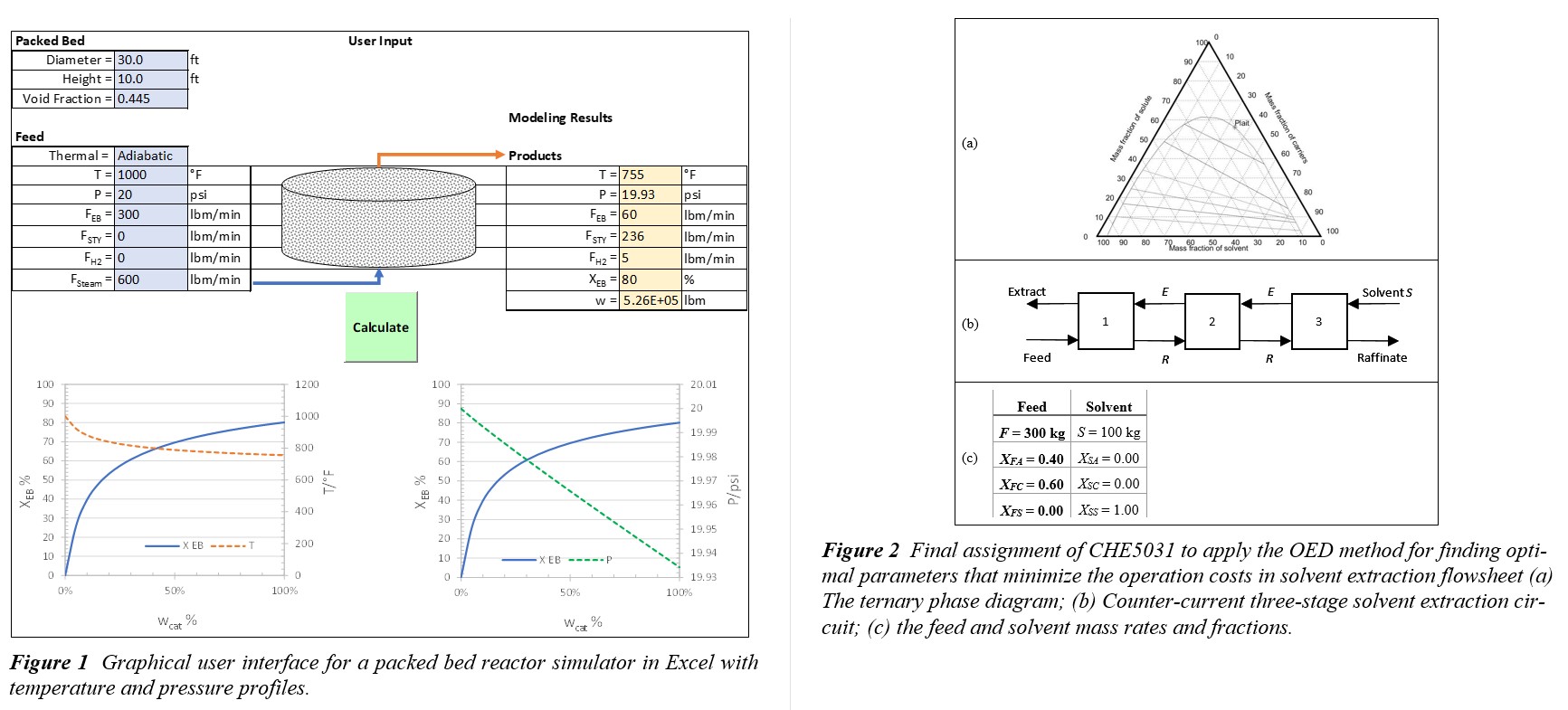2022 Annual Meeting
(108a) Computing and Data Analytics through Problem Based Learning
Authors
We have taught Excel with Visual Basic for Applications (VBA) in the Computational Methods course since 2010 and added Python for scientific computing and data analytics in 2019. Process Modeling uses Aspen HYSYS and SolidWorks. MATLAB was selected as the computational language for the advanced Analysis course in 2020. These courses aim to train our chemical engineering students to higher proficiency with modeling and simulation methods and computer software tools.
Process Modeling is a computer lab-based course to train students in using commercial simulation and modeling tools to prepare them for our unit operations and design courses. In our Computational Methods course, students learn topics including Introduction to Numerical Methods, Excel for engineering analysis, Pivot Table and Charts, VBA and Python programming, Linear equations, Derivative approximations, Roots of nonlinear equations, Optimization, Uncertainty, Least-square regression, Interpolation, Integrals, Initial-value problems and ODEs, Boundary-value problems, and PDEs. In Analysis, students learn topics including Introduction to modeling in chemical engineering, MATLAB skill preparation, Model fitting, spline functions, Optimization toolbox, Enhanced optimization, Global optimization, Optimal experimental design, Data statistics and analytics, Complex equation systems, Process integration, and optimization.
Apart from regular assignments and exams, the teaching pedagogy of Problem Based Learning (PBL) is used in our courses. In Computational Methods, we assign a term project that requires a combination of numerical methods. This assignment addresses our program student outcomes of complex problem solving and technical communication. For example, a project may require students to build a packed-bed reactor simulator in Excel. The reactor model equations involve mass, energy, and pressure balances requiring numerical integration of the first-order differential equations. Students also code functions for physical and chemical properties that require least-squares regression, numerical quadrature, or root-finding. Figure 1 shows an example of an Excel worksheet with a graphical user interface and plots of the packed-bed reactor profiles for composition, temperature, and pressure. Students are expected to incorporate data input validation and write a concise instructional manual for their simulation tool. Students may elect to prepare a video user guide.
We apply PBL for the studentsâ final assignment in the Analysis course. They apply an orthogonal experimental design to find the optimal parameters that minimize the operation costs in solvent extraction flowsheet using a ternary diagram shown in Figure 2. Students have 3 weeks to work in teams and submit a written group report for this assignment.
In engineering education, interpersonal skills, teamwork, communication, and problem-solving skills are most frequently identified as highly important by employers. The PBL is an effective method for teaching computing and data analytics in these courses. The key features of PBL are to provide professional training involving both teamwork and individual exercises for our students and encourage a transformative learning experience for them.
